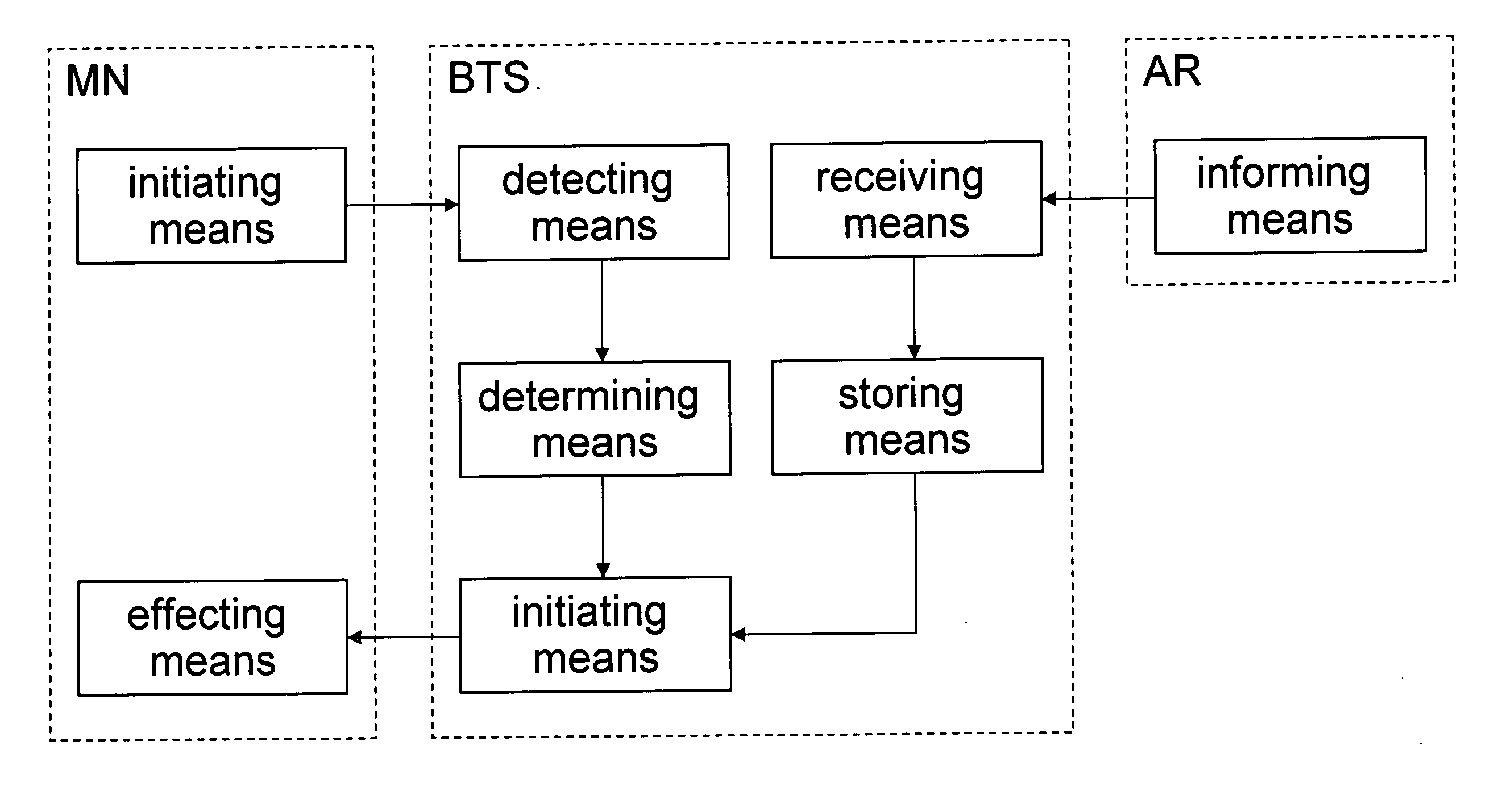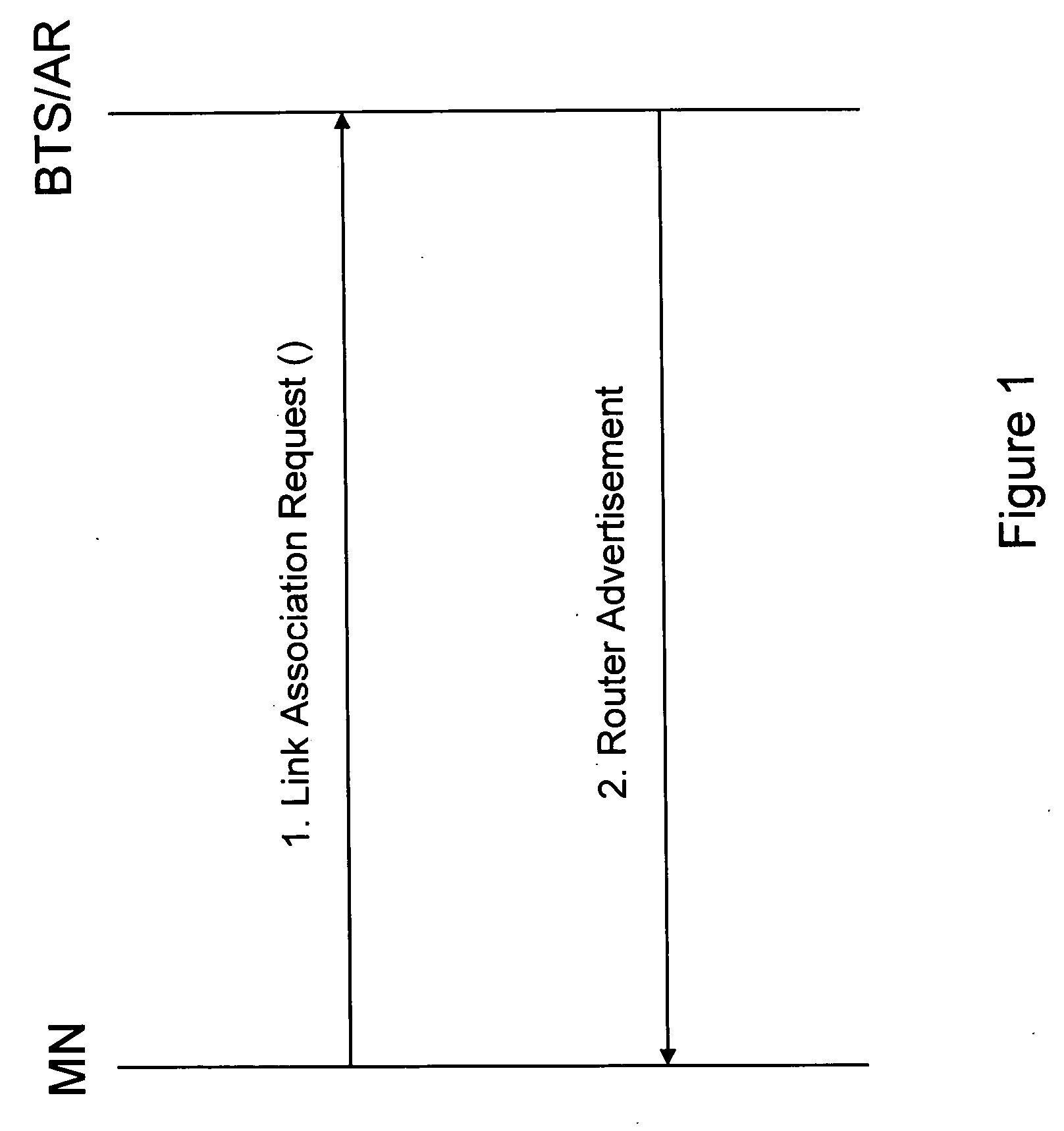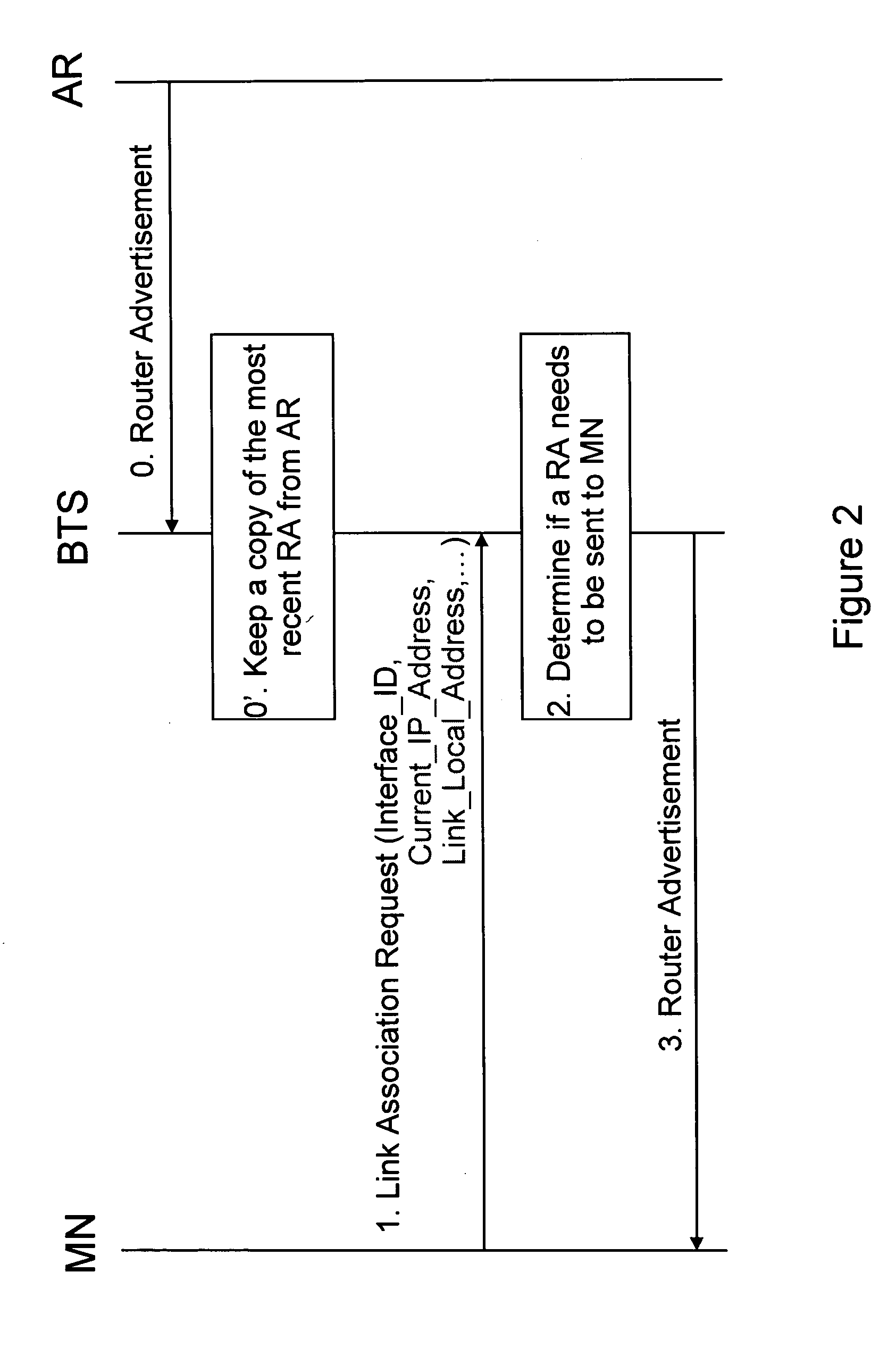Method, network elements, a terminal, a network infrastructure, and a communication system for triggering events
- Summary
- Abstract
- Description
- Claims
- Application Information
AI Technical Summary
Benefits of technology
Problems solved by technology
Method used
Image
Examples
first embodiment
[0079]FIG. 2 depicts a signaling flow chart according to a first embodiment of the present invention. In this figure, the network infrastructure consisting of a base transceiver station BTS and an access router AR is illustrated to be split up. However, it is to be noted that both network elements can also be implemented at the same place and / or in a conjoint infrastructural node.
[0080] The basic idea of the present embodiment is that the base transceiver station representing a first network element determines if a higher layer message needs to be sent based on the presence or the value of one or more parameters carried in a lower layer message. If required, the base transceiver station sends the higher layer message, or in general initiates the higher layer event, on behalf of the access router representing a second network element.
[0081] In step 0 of FIG. 2, the access router AR sends a Router Advertisement message to the base transceiver station. The base transceiver station st...
second embodiment
[0101]FIG. 4 depicts a signaling flow chart according to a second embodiment of the present invention. Thereby, in the implementation according to FIG. 4, the base transceiver station has intelligence to determine the need for a higher layer event or message based on a lower layer event or message.
[0102] This embodiment is somehow similar to the implementation examples presented above. The difference resides in that the base transceiver station BTS requests the access router AR to send a Router Advertisement instead of sending it on behalf of the access router AR. Thus, no storing of respective information on the higher layer event or message and no storing means are needed at the base transceiver station BTS.
[0103] In step 1 of FIG. 4, the mobile node sends a link layer message for requesting a link establishment to first network element, i.e. to the base transceiver station. Upon receiving the respective Link Association Request message, the base transceiver station BTS first de...
third embodiment
[0116]FIG. 6 depicts a signaling flow chart according to a third embodiment of the present invention. Thereby, in the implementation according to FIG. 6, instead of in the base transceiver station, intelligence to determine the necessity for a higher layer event or message based on a lower layer event or message resides in the access router. That is, the base transceiver station is not able to decide on the necessity for a network layer event or message when detecting a lower layer event or message.
[0117] In this case, upon detection of a lower layer event such as upon reception of a Link Association Request message from the mobile node MN (step 1), the base transceiver station BTS in step 2 always sends a request for a higher layer event to the access router AR. In FIG. 6, this request is represented by the RA Request message. The access router AR determines in step 3 if a higher layer event / message such as a Router Advertisement needs to be sent / excited to / at the mobile node righ...
PUM
 Login to View More
Login to View More Abstract
Description
Claims
Application Information
 Login to View More
Login to View More - R&D
- Intellectual Property
- Life Sciences
- Materials
- Tech Scout
- Unparalleled Data Quality
- Higher Quality Content
- 60% Fewer Hallucinations
Browse by: Latest US Patents, China's latest patents, Technical Efficacy Thesaurus, Application Domain, Technology Topic, Popular Technical Reports.
© 2025 PatSnap. All rights reserved.Legal|Privacy policy|Modern Slavery Act Transparency Statement|Sitemap|About US| Contact US: help@patsnap.com



